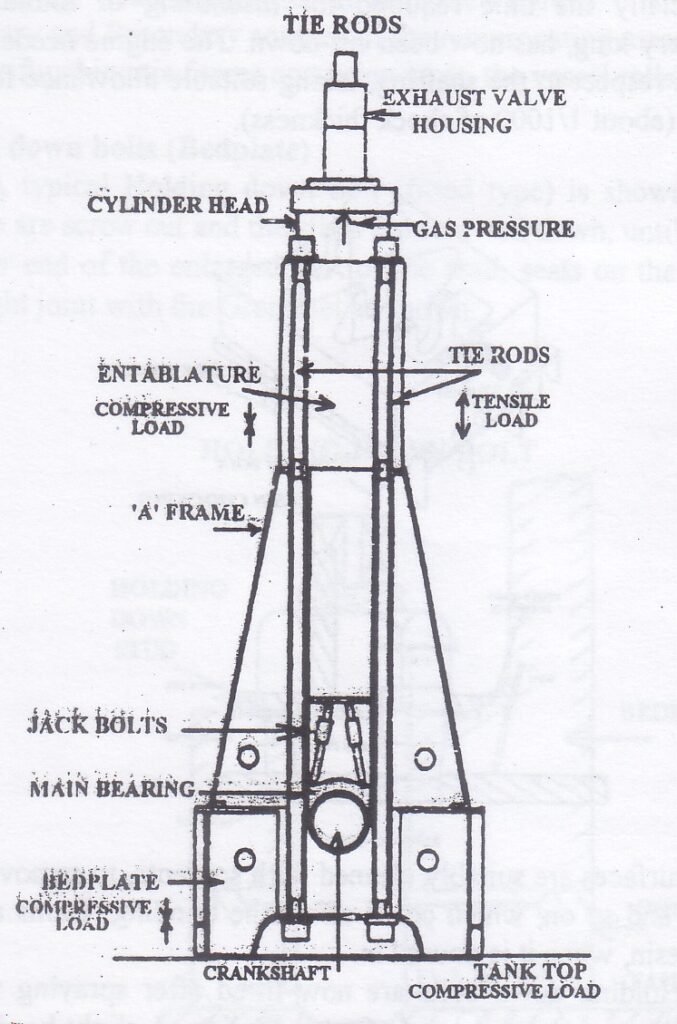An A-frame in the context of an internal combustion (IC) engine typically refers to a structural component used in the engine’s assembly or installation, often related to mounting or support systems.

Key Features of A-Frames in Large Crosshead Engines:
- Support for Cylinder Block: A-frames are essential for stabilizing the cylinder block, being fitted to transverse girders and ensuring the block remains firmly secured during operation.
- Assembly Design:
- Tie-bolts pass through these A-frames, enhancing strength and resilience.
- In some designs, multiple A-frames are combined with the crankcase casing to form a rigid box structure, which is attached to the engine.
- Construction:
- A-frames are fabricated from flat steel plates that are welded together, creating a robust component that provides necessary support.
- These frames serve as mounting points for several key engine components, including:
- Crosshead guides
- Main crankcase covers
- Piston cooling supply pumps and return drains
- Alignment and Rigidity:
- A-frames are precisely aligned on the bed plate to ensure the correct positioning of all mounted components, forming a rigid structure that maintains alignment.
- This assembly helps accommodate the higher lateral forces introduced by long and super long stroke engines, which use relatively short connecting rods. These rods, despite lowering the engine’s overall height, increase the angle and consequently, the lateral force component.
Construction:
- Materials: Commonly made from steel or aluminum to ensure strength while keeping weight manageable.
- Design: The triangular shape of the A-frame (like a capital A) provides excellent load-bearing capabilities.
Advantages of A-Frame
- Greater Structural Rigidity: Provides enhanced strength and stability to withstand operational stresses.
- More Accurate Alignment: Ensures precise alignment of the crosshead, which is crucial for engine efficiency and longevity.
- Uniform Force Distribution: The design allows for a more uniform distribution of forces, leading to a lighter structure without compromising strength.
- Improved Oil Tightness: The robust construction helps maintain seals and improve oil retention, enhancing engine performance and reducing leaks.
